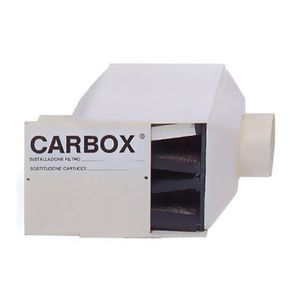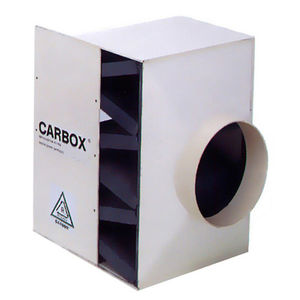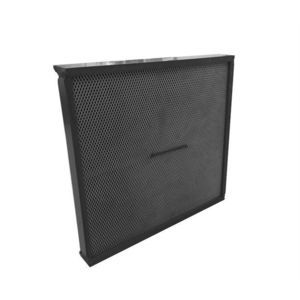
- Medical Technical Facilities
- Hospital infrastructure
- Air filter unit
- Labor Security System
Air filter unit BE6 activated carbonfor security storage cabinets
Add to favorites
Compare this product
fo_shop_gate_exact_title
Characteristics
- Type of filtration
- air, activated carbon
- Applications
- for security storage cabinets
Description
Activated charcoal is a microporous form of charcoal, which can be produced from various raw materials, such as peat, wood, lignite and more. The charcoal atoms located on the inner surface of the activated charcoal exert an attraction on the surrounding gas and liquid molecules.
Almost all industries and laboratories have the need to limit or control emissions into the atmosphere, especially if polluting toxic compounds are formed during processing.
The treatment of emissions with activated charcoal is one of the simplest and least expensive procedures, provided that the type of contaminant has the right characteristics to be adsorbed by the charcoal. Otherwise, filters produced with synthetic resins cause a reduction in the absorption capacity of up to 50%.
Charcoals are not all the same, in fact there are types that are better suited to certain pollutants, and that provide higher yields.
In some applications, the activity of activated charcoals can be enhanced by impregnating the internal sheets with substances having a catalytic effect and which result in chemical absorption.
The absorption capacity of activated charcoal filters varies according to the following parameters:
- concentration of contaminants in gas or air
- temperature and humidity
- pressure
- contact time between air or gas and activated charcoal
- dimensions of the charcoal grain
Catalogs
2018 COMPLETE CATALOG
39 Pages
Related Searches
*Prices are pre-tax. They exclude delivery charges and customs duties and do not include additional charges for installation or activation options. Prices are indicative only and may vary by country, with changes to the cost of raw materials and exchange rates.






